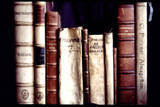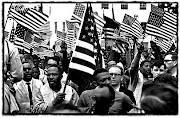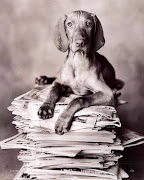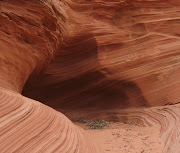 some of the world's most prestigious museums, Louvre's inverted pyramid, Cleveland's Rock and Roll Hall of Fame, the National Gallery of Art or the Musée d'Art Moderne Grand-Duc Jean (MUDAM) in Luxembourg, all containing priceless works on display. At the age of ninety one, Ieoh Ming Pei, Pritzker Prize winner and a multicultural phenom put his imprimatur in Doha, Qatar on the newly opened Museum of Islamic Art (MIA). The magnificent spare no expense building sits astride one of the famed man-made islands as a modern wonder paying homage to the past. Showcasing the art pieces on two floors the curator paid attention to a span of a thousand years, across geography from the ancient Persia to a jade pendant from India to a multitude of art materials. Exhibits are exquisite after the impressive eye candy the symmetrical museum makes upon arrival with reflecting pools, a geometric main staircase hall with the Zen of an Islamic garden. It was a cool enough event that Robert De Niro attended the museum opening amongst the Gulf region's pantheon of royalty.
some of the world's most prestigious museums, Louvre's inverted pyramid, Cleveland's Rock and Roll Hall of Fame, the National Gallery of Art or the Musée d'Art Moderne Grand-Duc Jean (MUDAM) in Luxembourg, all containing priceless works on display. At the age of ninety one, Ieoh Ming Pei, Pritzker Prize winner and a multicultural phenom put his imprimatur in Doha, Qatar on the newly opened Museum of Islamic Art (MIA). The magnificent spare no expense building sits astride one of the famed man-made islands as a modern wonder paying homage to the past. Showcasing the art pieces on two floors the curator paid attention to a span of a thousand years, across geography from the ancient Persia to a jade pendant from India to a multitude of art materials. Exhibits are exquisite after the impressive eye candy the symmetrical museum makes upon arrival with reflecting pools, a geometric main staircase hall with the Zen of an Islamic garden. It was a cool enough event that Robert De Niro attended the museum opening amongst the Gulf region's pantheon of royalty. Ten years ago, this started with the Emir H H Sheikj Hamad bin Khalifa Al Thanki and Sheikh Hassan Al Thani family concentrating on the procurement of Islamic artifacts amidst Europe's established auction houses. London's art scene saw an influx of capital dedicated to filling a museum that was but an idea on a draft board as the final crown jewel in the stellar architectural career of I M Pei. Five stories of wonder encapsulating 382,000 square feet with a price tag of $300 million is the entry fee to establish Doha as a cultural destination for Arabian and Western tourism and pride of place in the hoity-toity art world. The collection features a $73 million dollar Mark Rothko abstract painting as well as the best of art from other cultures while featuring the works of little known Islamic masters. (Picture: Maher Attar)
Ten years ago, this started with the Emir H H Sheikj Hamad bin Khalifa Al Thanki and Sheikh Hassan Al Thani family concentrating on the procurement of Islamic artifacts amidst Europe's established auction houses. London's art scene saw an influx of capital dedicated to filling a museum that was but an idea on a draft board as the final crown jewel in the stellar architectural career of I M Pei. Five stories of wonder encapsulating 382,000 square feet with a price tag of $300 million is the entry fee to establish Doha as a cultural destination for Arabian and Western tourism and pride of place in the hoity-toity art world. The collection features a $73 million dollar Mark Rothko abstract painting as well as the best of art from other cultures while featuring the works of little known Islamic masters. (Picture: Maher Attar) 
Not long ago, the idea of culture being a reason to visit the Gulf would have made other Arabs laugh. No longer.
The Syrian cultural historian Rana Kabbani sees a political element to the museum, putting Doha on the cultural map.
"I think all the rulers in the Gulf see what they really lack isculture on a grand scale, as a kind of imperial identity. It's a political-cultural lack. They have the means, and they're going for it."
That's why along the coast, two museums are planned for Abu Dhabi - branches of the Louvre and Guggenheim.Art in the Islamic world is taking a new resonance as the museum of the millennium opens and Saudi Arabia holds more gallery exhibitions albeit in embassies. To inaugurate the museum there is an exhibit and a conference Beyond Boundaries - Islamic Art Across Cultures. There was a Sunday special panel featuring the architect of the decade, I M, Pei on Islamic Architecture from Tradition to Modernity.



Women are painting, sculpting and creating their own art behind the veils and scrolled walls in Saudi society. A public showing is a cultural possibility with embassy exhibits more prevalent in the realm of the possible and where chances increase the art's exposure. The colors and compositions are arresting, more so because of who the people are that are trying new mediums are garnering attention for their sophisticated works. The Kingdom pledged to sponsor the best are culled from a competition in their own embassies as a furtherance of showcasing their people's talents with clay, camera or paintbrush.
One artist took advantage of the venue to hang an abstract painting of a woman, with one breast clearly depicted — a hint of nudity still taboo outside the diplomatic confines of the embassy, where Saudi Arabia's religious police cannot enter.
The Wednesday night showing in a small hall was packed with expatriates and, more significantly Saudis, whose presence was a reflection of the surge of interest in the arts in the kingdom in the past few years. Local artsshows have been on the rise, more Saudi artists
are participating in overseas exhibits, and more universities and schools are offering arts degrees.
The first non-governmental arts society was established a year ago, with four women on its 10-member board. Saudis have become more accepting of abstract art, which, only a few years ago, was the subject of ridicule. And in many Arab cities, Saudi collectors are snapping up works by local artists, some of whom get special orders from their rich clients.

So many beautiful works to page through in Islamic Art and Culture: A Visual History. It was important to me to find a book written by an eminent Islamic scholar. Professor Nasser D. Khalili presents the full range of art possibilities and the meaning behind each selected piece. Great coffee table book sure to cause cultural discussion.














No comments:
Post a Comment